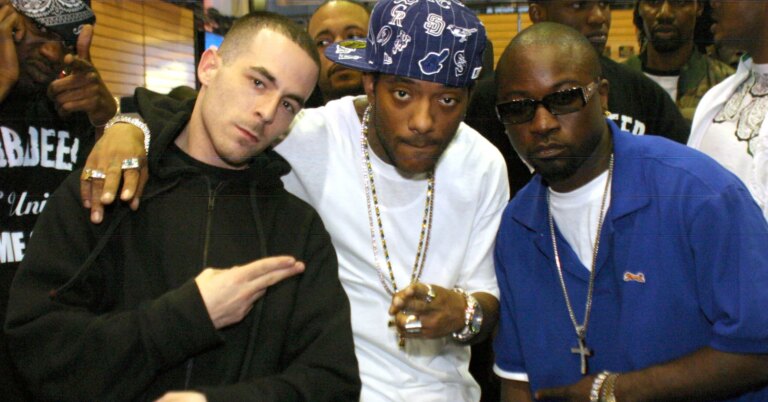
Once we consider race riots in American historical past, the 1919 Chicago Race Riots or the 1992 Los Angeles Rebellion typically come to thoughts. However there are a lot of different riots which have occurred—devastating, ignored occasions—which were overlooked of most historical past books. These weren’t simply remoted outbursts of violence; they had been explosions of racial pressure fueled by systemic injustice, concern, and hatred.
Listed below are 5 race riots you seemingly by no means discovered about in class, however ought to have.
1. The Wilmington Coup (1898) – Wilmington, North Carolina
This wasn’t only a riot. It was a violent overthrow of a legally elected authorities. In 1898, a multiracial authorities established political energy in Wilmington, North Carolina put up Emancipation.
Based on PBS, Black North Carolinians noticed a strategic alternative within the late nineteenth century to unite with the largely white Populist Celebration round shared financial and political pursuits. This unlikely alliance grew to become generally known as the Fusion motion, and it led to the creation of a Fusion authorities. Collectively, Black voters and white Populists pushed for reforms like honest elections, public training funding, and higher labor protections. For a quick second, multiracial democracy was not solely possible—it was working.
Sadly, white supremacists, unwilling to just accept this shift, launched a violent coup. Armed mobs burned down Black-owned companies, murdered dozens of Black residents (although the true demise toll is unknown), and compelled elected officers to resign at gunpoint. It stays the one profitable coup d’état on American soil.
2. The East St. Louis Bloodbath (1917) – East St. Louis, Illinois
Amid rising racial tensions fueled by labor disputes and white resentment towards Black employees who had moved north throughout the Nice Migration, violence exploded in East St. Louis.
Between 1916 and 1917, drawn by the promise of jobs in wartime industries, an estimated 10,000 to 12,000 African People left the South and migrated to East St. Louis, Illinois, as a part of the Nice Migration, per the American Expertise. Their arrival reworked the town’s demographics and stirred resentment amongst many white residents, who considered the rising Black workforce as a menace to their financial and social dominance.
Tensions simmered for a yr till July 1, 1917, when a rumor unfold {that a} Black man had killed a white man. The next day, July 2, that pressure exploded into one of many deadliest race riots in American historical past. For practically every week, East St. Louis was gripped by chaos: white mobs carried out drive-by shootings, brutal beatings, and widespread arson, all directed on the Black neighborhood.
The devastation was staggering. Official studies listed 9 white deaths and claimed round 40 Black lives had been misplaced, however many historians imagine the true variety of African American fatalities was within the tons of. Greater than 6,000 Black residents fled the town, and damages to property approached $400,000, the equal of tens of millions right now.
3. The Pink Summer time (1919) – Nationwide
The summer time of 1919 noticed a wave of race riots erupt throughout greater than three dozen cities within the U.S., together with Chicago, Washington, D.C., and Elaine, Arkansas. Tensions had been excessive as Black troopers returned from World Conflict I demanding civil rights and work alternatives, prompting many white People to react with violence.
Based on the Nationwide World Conflict Museum and Memorial, the carnage and violence began first in Washington, D.C. On July 19, 1919, fueled by a false rumor {that a} Black man had assaulted a white girl, white mobs took to the streets. Led by off-duty sailors and just lately discharged troopers, they focused Black neighborhoods, attacking residents at random and igniting days of racial terror within the nation’s capital.
Simply days later, violence erupted once more — this time in Chicago. On July 27, tensions reached a breaking level when a Black teenager, Eugene Williams, drowned in Lake Michigan after being struck with rocks for unintentionally crossing right into a whites-only swimming space. The police refused to arrest the white perpetrator, sparking outrage and unleashing days of violence.
What adopted was some of the devastating city race riots in U.S. historical past. Preventing engulfed Chicago’s South and West Sides and spilled into downtown. As fires unfold and assaults mounted, the state militia was known as in to revive order. By the point the violence subsided, 38 folks had been lifeless — 23 Black and 15 white — with over 500 injured. Greater than 1,000 Black households had been left homeless as white rioters torched houses and companies throughout the town.
Arkansas, noticed one of many deadliest episodes, the place as much as 200 Black folks had been killed following a dispute over an alleged “riot” amongst Black sharecroppers. The lethal riot erupted in response to a white legislation officer being gunned down exterior a Black sharecropper gathering.
4. The Tulsa Race Bloodbath (1921) – Tulsa, Oklahoma
Although it’s gained extra consideration lately, the destruction of “Black Wall Avenue” in Tulsa was lengthy overlooked of mainstream historical past books. In 1921, white mobs destroyed the affluent Greenwood District — one of many wealthiest Black communities in America. Greater than 1,000 houses and companies had been leveled, and an estimated 100 to 300 folks had been killed. Based on Tulsa Historical past, the incident stemmed from a vicious rumor that unfold a couple of younger Black man named Dick Rowland who had rode the elevator within the Drexel Constructing at Third and Principal with a white girl named Sarah Web page.
Often called the “Black Wall Avenue,” Greenwood was a bustling Black neighborhood that took up practically 35 sq. blocks in downtown Tulsa. It was house to tons of of flourishing Black companies. Based on Historical past, the self-sustaining neighborhood was stuffed with Black-owned barber outlets, eating places, film theaters, clothes shops, physician places of work and extra.
Nevertheless, on the dreadful day of Might 31, 1921, white assailants looted, torched and burned down tons of of Black-owned houses and companies within the space, leaving a path of billowing smoke. Round 300 folks died throughout the egregious assault. “We misplaced a lot. I imagine if all this hadn’t occurred once I was a baby, they’d’ve been higher in life,” Hughes Van Ellis, a survivor of the horrific bloodbath, instructed 2 Information Oklahoma in a 2021 interview, two years earlier than his demise in 2023.
“My sister Viola instructed me. She stated it was thought weapons had been going off,” he continued. “Dad regarded exterior to see folks getting gunshot, homes getting burned. So, there’s solely six little children. I used to be a child. So, my father simply managed to barely get out, simply with the garments on our backs. We didn’t have time to get nothing else collectively.”
Earlier than his passing, Ellis — a World Conflict II veteran — joined his sister, 109-year-old Viola Fletcher, within the combat for reparations for the Tulsa Race Bloodbath. Alongside them was 108-year-old Lessie Benningfield, one other survivor of the horrific assault.
5. The Rosewood Bloodbath (1923) – Rosewood, Florida
Within the small city of Rosewood, a false accusation by a white girl led to a week-long siege on a thriving Black neighborhood. White mobs burned houses, lynched residents, and terrorized survivors, forcing them to flee. The city was wiped off the map and its reminiscence buried for many years. On New 12 months’s Day, 1923, within the small city of Sumner, Florida, a white girl named Fannie Taylor claimed she had been assaulted by a Black man named Jesse Hunter, an escaped convict. Regardless of a whole lack of proof, her accusation sparked a violent chain of occasions that might devastate the close by Black neighborhood of Rosewood.
Rosewood was a quiet, self-sufficient city of about 200 Black residents. Within the days following Taylor’s declare, white mobs from Sumner and surrounding areas stormed into Rosewood, allegedly looking out for Hunter, in line with the Equal Justice Initiative. On Jan. 2, 1923, Sam Carter, an area Black carpenter, was captured, tortured, and lynched merely for being suspected of serving to Hunter flee.
Because the violence escalated, Rosewood’s Black residents started arming themselves in protection. On the evening of Jan. 4, a white posse opened fireplace on the house of Sylvester Provider, suspecting him of hiding Hunter. An aged girl inside was killed, and a shootout ensued, leading to a number of deaths on either side. Enraged by the resistance they met, the white mob regrouped and returned in even larger numbers.
On Jan. 5, between 200 and 300 white males descended on Rosewood, killing as many as 30 to 40 Black residents and setting fireplace to houses, church buildings, and companies. Survivors fled into close by woods or escaped by practice to Gainesville — few ever returned. Years later, it was revealed that Fannie Taylor had fabricated her story, more likely to cowl up an affair with a white man. Her lie destroyed a whole neighborhood.
SEE ALSO:
Breaking Down The Stereotype: Black Folks And Smoke Detectors
Breaking Down The Stereotype: Are Black Folks Extra Athletic?
5 Race Riots In America That You Had been By no means Taught In College
was initially revealed on
newsone.com








